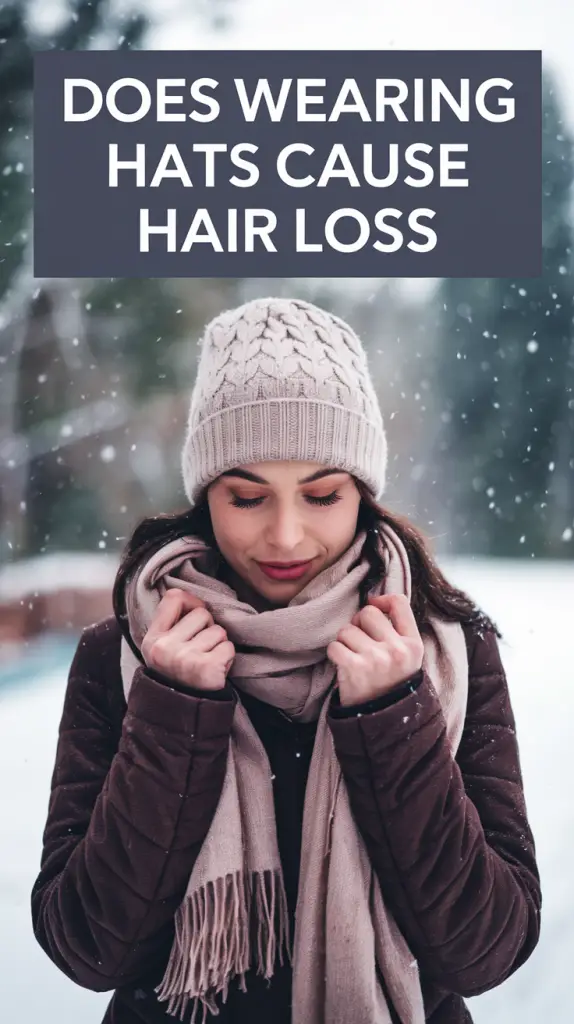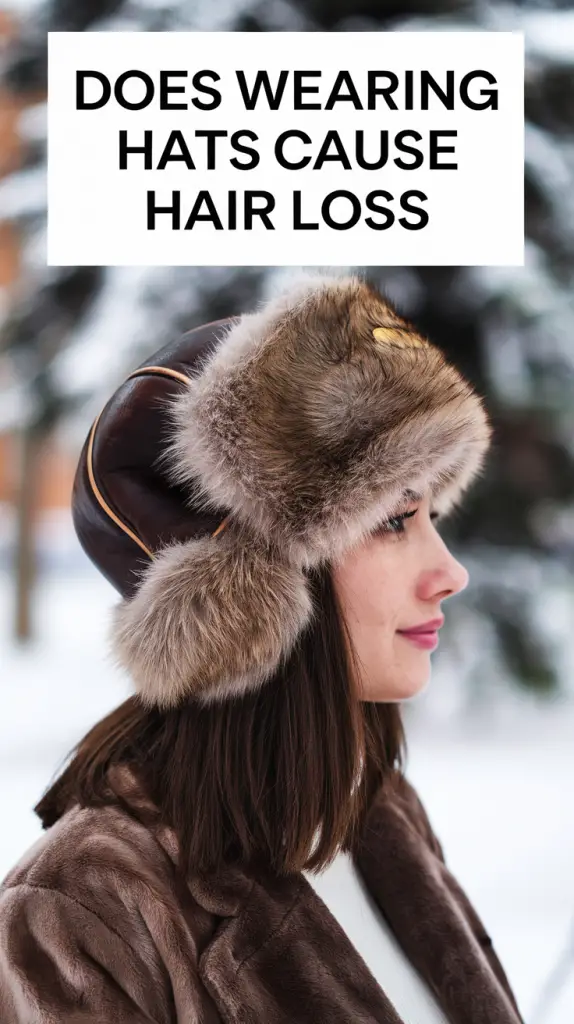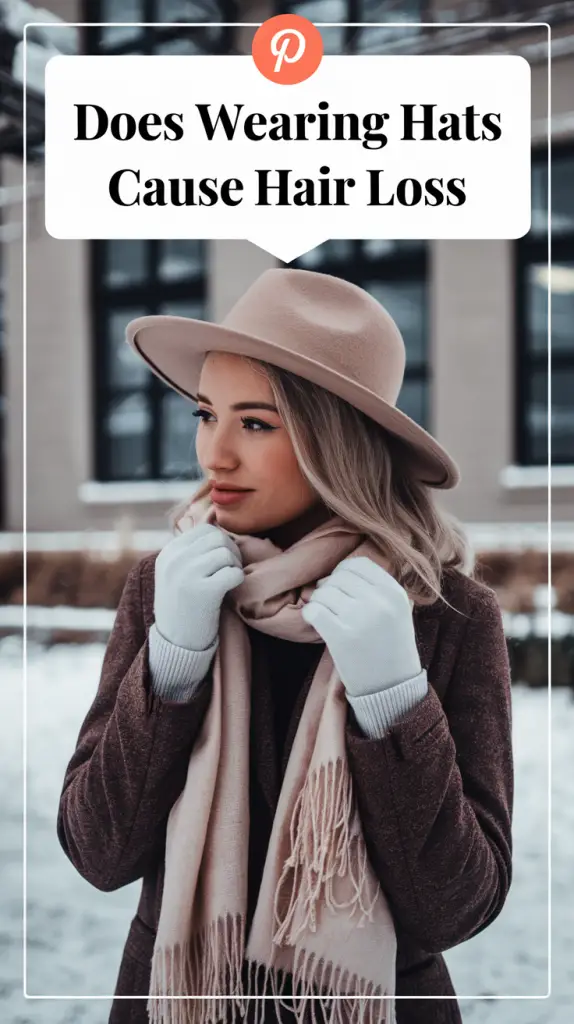Does Wearing Hats Cause Hair Loss?
It’s not surprising that people have been asking about the link between hats and hair loss. Hair is one of the most visible parts of the human body. It can be pretty unsettling when you start to lose your hair. As someone who knows this topic well, I’ve gathered insights from research and medical professionals who helped me explain the issue more fully. Together, we’ll explore the fascinating world of science and debunk the myth that a hat’s downfall is the cause of hair loss.
Do Hats Really Cause Hair Loss?
We can’t say for sure that the hat itself is causing hair loss this way. It’s true that hats don’t lead to hair loss directly. The main reasons for hair loss are genetic factors, hormonal changes, and stress-related disorders such as telogen effluvium. Androgenetic alopecia, which is also known as male and female pattern baldness, is the main cause of hair loss. It mostly comes down to an individual’s genetics and hormones, not the headgear they wear. These are the misconceptions that have been formed. The reality is that no hat suffocates hair or obstructs the mechanical supply of power to the follicles.

Headwear and Hair Loss: Busting the Myths
The idea that hats cause hair loss is still a popular myth. This is because people think that if hats restrict blood flow to the vertex or suffocate hair, it will weaken it. Absolutely. Fashion is a great way to express yourself. That said, hats need to be worn in a way that doesn’t harm the hair or scalp, which is quite sensitive. Wearing tight hats for a long time can cause a condition called traction alopecia, which is when the hair thins because the hat irritates it. So, hats can indirectly contribute to hair loss in a few ways.
The Traction Alopecia Risks of Tight Hats
Wearing a hat regularly doesn’t cause baldness, but it might contribute to something called traction alopecia, which could result from wearing a hat that’s too tight. This type of hair loss is caused by the constant pressure and stress on the hair follicles, which eventually leads to smaller and smaller follicles, resulting in thinner hair.
Sweat and Hygiene Concerns
If you wear a hat in the heat, your scalp might sweat more than usual, and you could end up sweating too much. If you don’t manage this moisture properly, it could lead to dandruff and encourage fungal infections, which can cause temporary hair loss. Taking a shower regularly or wearing a hat that’s been washed properly or is breathable will help you avoid getting sick.
Hair Breakage
Some hats are made out of materials that can cause hair to break if they get wet. Because of the friction between the hat and hair, the hair can break, split ends can form, or the hair can become weak. To avoid this, it’s best to choose hats made from soft, breathable materials like cotton. Also, it’s best to keep them off wet hair as much as possible.
| Causes of Hair Breakage from Hats | Preventive Measures |
|---|---|
| Rough hat material | Choose cotton or wool |
| Wearing hats on wet hair | Dry hair completely |
| Tight-fitting hats | Opt for looser fits |
What Truly Causes Hair Loss?
We need to take a close look at what originally caused this problem. Here are the main reasons for hair loss:
Genetics (Androgenic Alopecia)
The genetic pattern of hair loss, called androgenic alopecia, can be passed down to future generations. This condition affects both men and women, but it’s more noticeable in men because their hair gets thinner and they start to see a receding hairline.

Hormonal Changes
Hormonal changes that happen during pregnancy, menopause, and thyroid issues, as well as other medical conditions, are the main reasons for temporary hair loss, which is called telogen effluvium. This means that their hair falls out easily because it goes into a resting phase.
Lifestyle Factors
There are a few things that can cause thin hair, including starvation, tobacco usage, and stress. If you don’t get enough protein and you overuse hair solutions like chemical treatments and heat styling, it can weaken your hair follicles and make your hair fall out.
Infections or Scalp Conditions
If you have a scalp infection like tinea capitis (ringworm) or excessive white flakes, it can lead to hair loss. It’s also worth noting that you might be carrying a disease that’s transmitted through hats.
Benefits of Wearing Hats:
It might seem a bit strange, but wearing a hat could actually help with hair health. Hats protect your hair from UV rays, which can damage hair follicles and cause hair loss if not managed properly. If you’re noticing hair loss, a hat can be a great way to protect your scalp from the sun’s rays. It’ll help prevent sunburn and keep your hair strong and bouncy.
| Benefits of Wearing Hats | Explanation |
|---|---|
| UV protection | Shields hair and scalp from sun damage |
| Protection for thinning hair | Helps prevent further damage to weak strands |
| Environmental protection | Shields hair from wind, dust, and pollution |
How to Prevent Hair Loss While Wearing Hats
Choose the Right Fit
It’s best to avoid hats that are too tight because they can leave marks on your head. They should fit your head comfortably without restricting airflow around your scalp.
Keep Your Hats Clean
Washing hats regularly is the best way to keep them clean and free of bacteria, which can cause the scalp to dry out and affect the nerves that connect hair to the body. This is a good time to give them a more thorough clean.
Consider the Material
Opt for items made from materials like cotton or wool that allow air to flow through while keeping sweat to a minimum. Artificial fabric can sometimes trap heat and sweat, which can block pores and cause skin irritation.
Avoid Wearing Hats on Wet Hair
Hair is much more delicate when it’s wet. It’s best to wait until your hair is completely dry before putting on a hat to avoid any damage.
General Hair Care Tips
When these are tips for the easiest to lose hair people,
- Make sure you eat a diet full of biotin, iron, and zinc, which are known to be the most important vitamins and minerals in your body. Avoid using a very hot curler or perming your hair, as this can make it brittle over time.
- The best way to give your scalp a gentle massage is to stimulate the blood flow, which will help your hair to become healthier and longer.
- Avoid braiding or pulling your hair too tight into a ponytail. This could cause problems like tension on the hair follicles.
Conclusion:
Hats aren’t typically the main cause of hair loss. The main causes of hair loss are usually down to the genetic code of the individual, hormonal changes as men and women age, and lifestyle habits. Even so, if your hat is too tight or not cleaned properly, it can cause minor problems that indirectly affect the condition of your hair. There are a couple of ways to make sure your hats are fitting right. First, keep your scalp clean. And finally, follow some hair care practices that are in style. This will help you keep your hair and style looking good.
FAQs:
1. Can wearing hats every day cause permanent hair loss?
No, as long as the hat is really tight, using a hat every day would be fine (and it shouldn’t happen at any time). Unfortunately, hair loss is a permanent condition.
2. Does sweating under a hat lead to hair loss?
Apart from excessive sweating, which may cause the skin on your head to become inflamed and the hair to fall out for a short time (usually not more than a few months), other reactions are generally not very serious. The best way to avoid this is to make sure you don’t give bacteria a chance to grow and to keep your scalp and your hat clean.
3. Are some materials better for preventing hair breakage?
Cotton and wool are great air-permeable materials. They don’t create friction like synthetic fabrics do. This is why the latter may cause the hair to break.
4. Can hats help prevent hair loss?
Hats can protect your head from ultraviolet radiation, which can damage hair follicles and speed up hair loss. This means that they may be effective at preventing some types of hair damage.
5. How tight is too tight for a hat?
I’d say hats are definitely too tight if they’re pressing through your skin or hurting. Just let it hang loose so it doesn’t put any pressure on your head.

